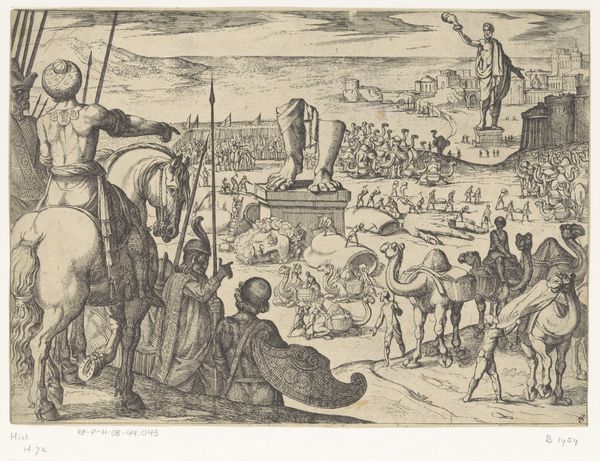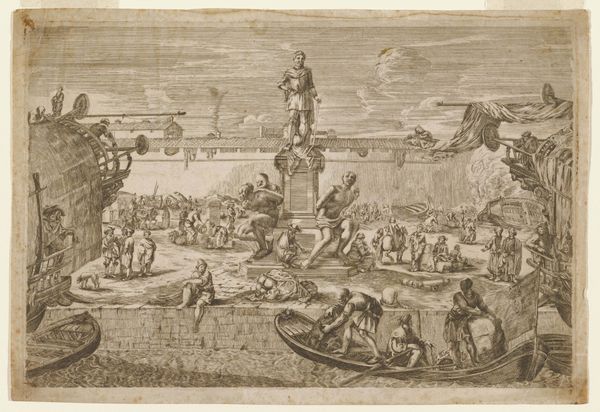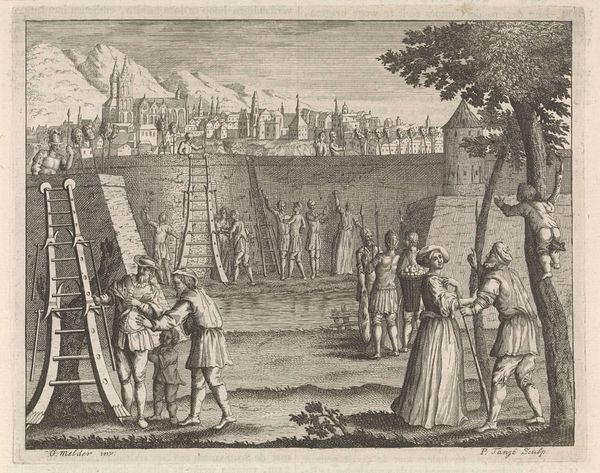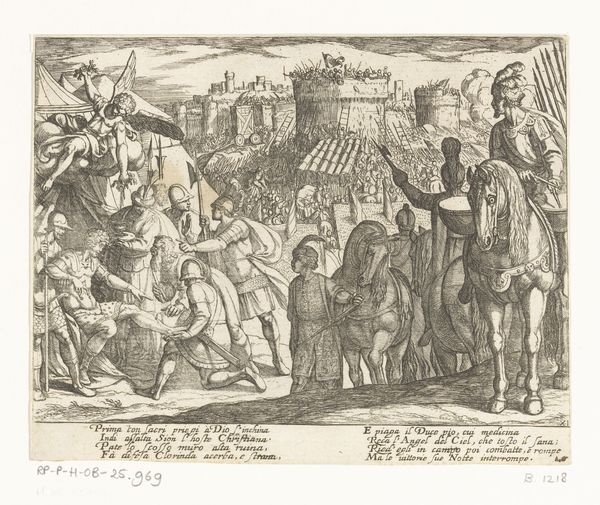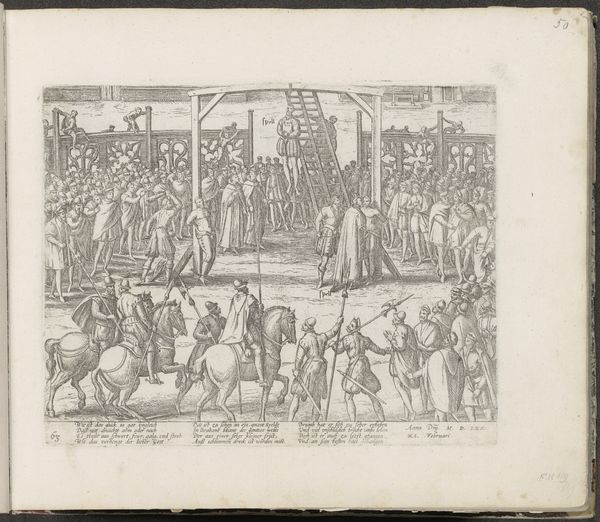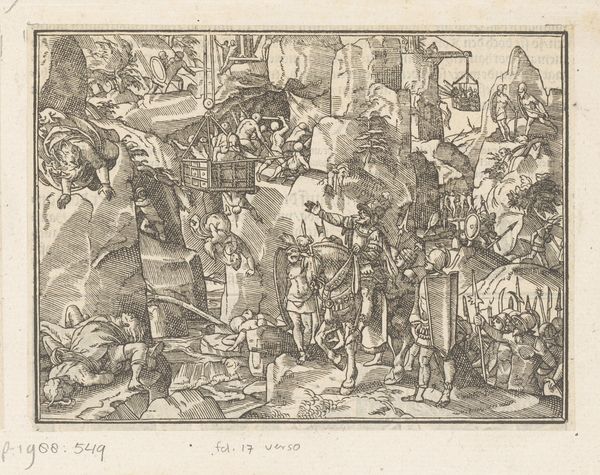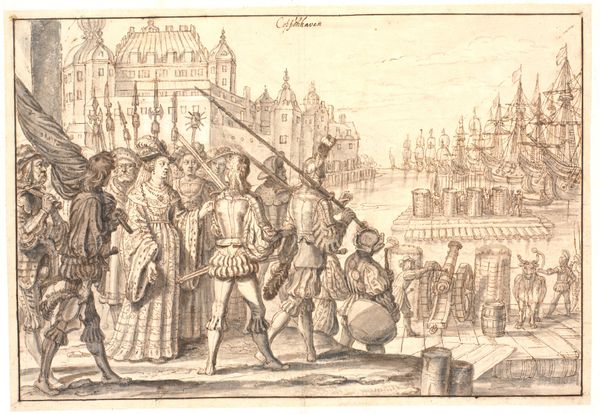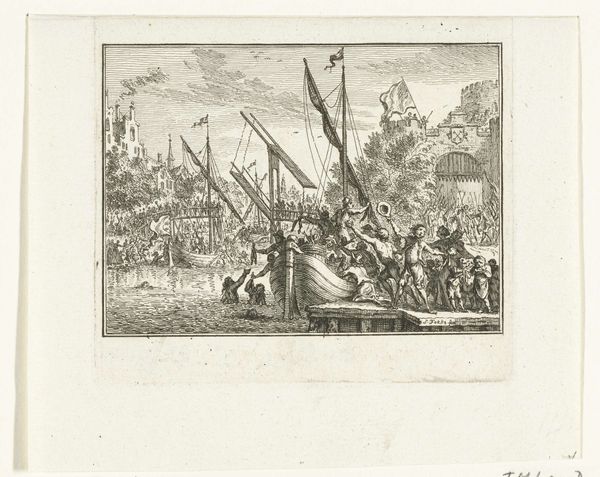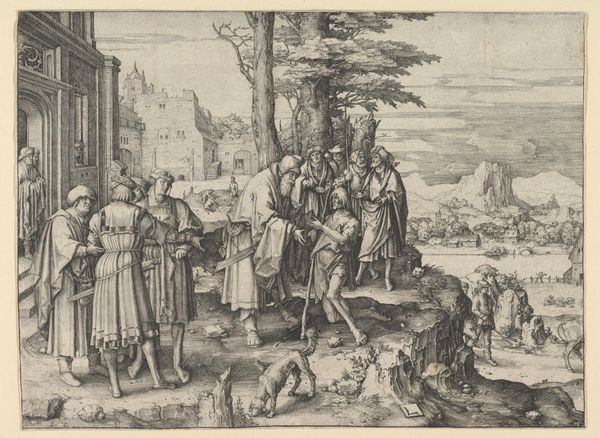
print, engraving
#
baroque
# print
#
figuration
#
genre-painting
#
history-painting
#
engraving
Dimensions: height 124 mm, width 147 mm
Copyright: Rijks Museum: Open Domain
Editor: This engraving from 1662-1665 is called "The corpses of the Anabaptists on the gibbet field, 1535". It's... intense, depicting what looks like the aftermath of some sort of massacre. What can you tell me about it? Curator: The intensity is palpable, isn’t it? Let’s think about the public function of images like these during the Baroque period. Consider this not just as a depiction of an event, but as a political statement made within a specific socio-political climate. How do you think this imagery functioned to shape public perception of Anabaptists? Editor: Well, seeing all those corpses… I guess it’s supposed to deter others from joining their cause. Almost like propaganda, then? Curator: Precisely. It is vital to look beyond face value and understand its instrumental nature within power structures. In seventeenth-century Europe, religious dissent was frequently met with severe responses. What purpose did depicting such brutal scenes serve in the maintenance of social order? Editor: So, it's about visually reinforcing the dominant power's narrative. But who exactly *was* this artist speaking *to* through this engraving? Who *consumed* this imagery? Curator: A good question. Prints like these were often distributed widely, making them accessible to a broader public than, say, oil paintings commissioned by the elite. That broad accessibility allowed the propagation of sanctioned historical narratives. What aspects of the composition might further emphasize a specific interpretation? Editor: The way the authority figures are so prominent in the foreground, almost casually observing... and the sheer scale of the execution ground itself? Curator: Exactly. These choices influence how the event is framed for the viewer, embedding and entrenching societal attitudes through impactful graphic depictions. Considering this work's power dynamic through accessibility and propaganda definitely reshapes my understanding of it. Editor: Me too. Thanks! I was solely focusing on the immediate depiction, but it makes far more sense to view it in a much broader context.
Comments
No comments
Be the first to comment and join the conversation on the ultimate creative platform.
